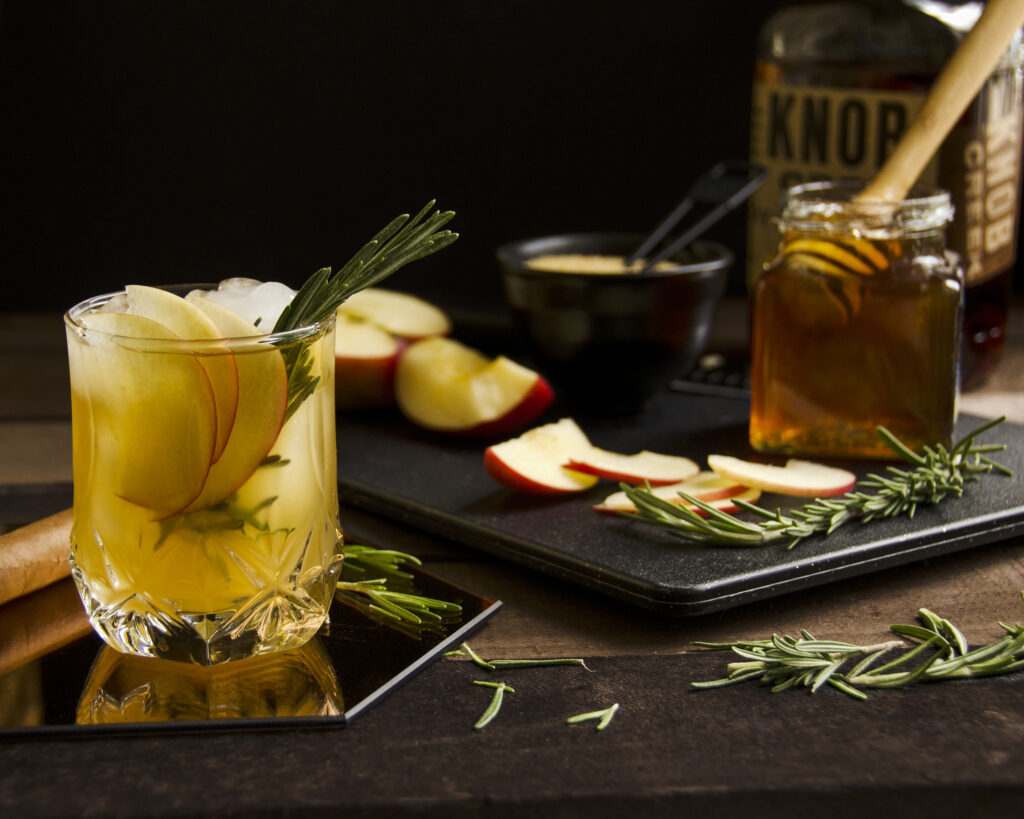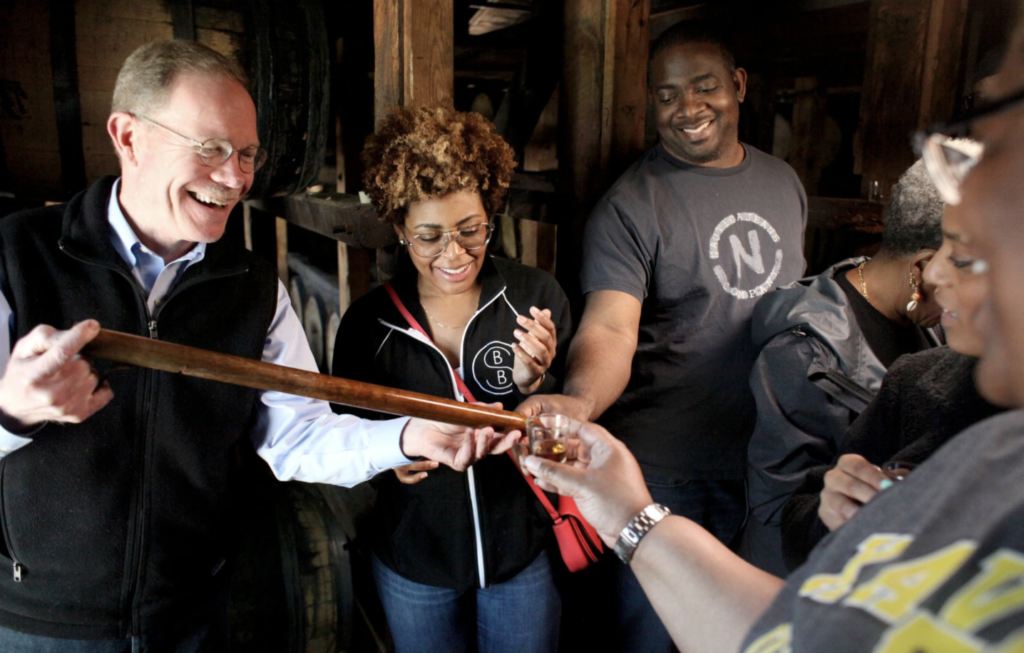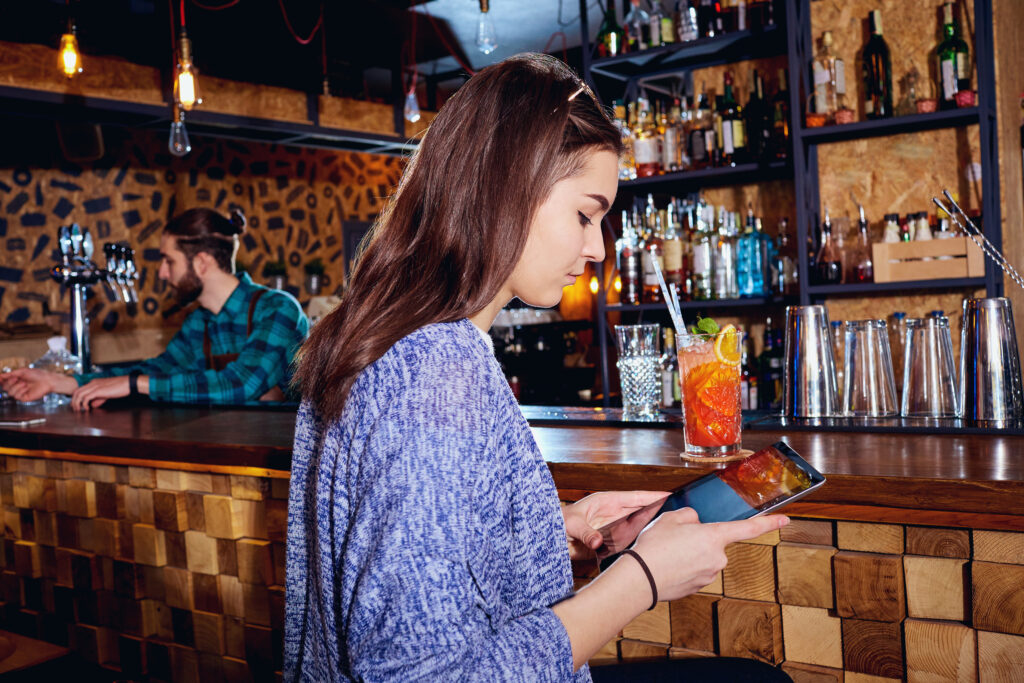
By: Hanifa Sekandi
You may have heard about the Bee’s Knees honey-infused prohibition-era cocktail. Perhaps it is your go-to drink on a warm summer night. This drink is a refreshing blend of gin, lemon juice and a touch of honey, a guilt-free beverage to indulge in. It was crafted by Australian-born bar-tender Frank Meier in the 1920s, who simply elevated a Gin Sour by replacing simple syrup with honey. One hundred years later, it’s still a buzz-worthy beverage, with an ingredient favored due to its anti-inflammatory and antimicrobial properties. Honey is also considered a healthier sweet alternative to refined sugar since it consists of trace minerals and vitamins. It can still be high in calories, but it’s a better option than high-fructose corn syrup and sugar.
Why is Honey all the Buzz?
The term Bee’s Knees means “the best” or “outstanding,” and honey does more than add a little sweetness to your life. Although one might not liken a few cocktails to health and well-being, honey has become a star ingredient for nouveau bottled and canned beverages that appeal to the health-conscious consumer, and a cocktail isn’t the exception.
A question that may come to mind is, why honey? Honey, liquid gold, has been an important component in alcohol that predates the prohibition era. Mead, known as the “drink of the Gods,” is a fermented alcoholic beverage made with golden honey, bacterial culture or yeast, and water. This ancient honey wine found in Africa, Asia and Europe has a long lifeline dating approximately 4,000 years. Fast forward to the 21st century, and honey is not just a royal sweetener with great health properties. It’s an ingredient that makes one brand stand out from the rest.
Once touted as your grandmother’s therapeutic cure-all for staving off a cold or sore throat during winter months, as health becomes a primary concern for consumers, honey has become a coveted and cherished ingredient due to its undisputed benefits. As the negative impacts of refined sugar consumption become clear, the alcoholic beverage industry turns to alternatives like honey, which add a sweet touch while being much better for the body.
Sipping Guilt-Free Cocktails
Since refined sugar is a frowned-upon ingredient, brands that do not pivot with the health-conscious consumer will find themselves left behind in a market that calls for change where curation, sourcing and production is concerned. Yes, having a few libations with friends during a funfilled cottage weekend is the norm, but ingredients matter. As more people take the time to read the label, what’s in a premixed cocktail will not be overlooked simply because it tastes good.
For individuals who see fitness as a lifestyle, finding alcoholic beverages that support this ethos is a top priority. Wellness websites often list low-calorie and reduced-sugar canned cocktails without artificial sweeteners or chemicals that can diminish a health-conscious nutrition plan. Most people look for caloric content first and then what ingredients are used to provide flavoring and added sweetness. This higher standard from consumers has brands leaning towards natural ingredients and moving away from artificial flavorings, sweeteners and additives.
A la carte specialized cocktails are now accessible at the consumer level. Access to simplified, clean versions created by top bartenders and mixologists can be found at your local liquor store or delivered to your doorstep. Feeling a little bit better about decisions where imbibing is con-cerned has gained strong support via social media initiatives and marketing campaigns by brands who aim to shake up the industry. Once the new kid on the block, premixed drinks made with honey, natural sweetener or real fruit are now taking center stage.
Honey-infused cocktails are the gateway to what is next on the horizon for “fun nutrition.” Although honey is a rockstar ingredient, it doesn’t lend itself to every cocktail due to its rich flavor profile. Unlike refined sugar or corn syrup, it is more than just sweet. Brands that plan to join this new wave will have to experiment with other sweet alternatives to hit the mark.
Maple Syrup and Monk Fruit Are Making Things A Little Sweeter
It turns out maple syrup is just as good in a cocktail as it is on a warm, delicious stack of pancakes. You may have heard of or tried maple syrup-infused still and sparkling water. If you add a little gin, some lime and ice, it’s a drink worth singing about. (You can thank us later for this DIY cocktail.) There are numerous cocktails made to order with maple syrup, drinks you can make right at home. Beverage companies looking to pivot will most likely take a few of your favorites and turn them into simple, clean, ready-to-drink cocktails. For example, an Apple Sour is just as simple to make as the Bee’s Knees cocktail if you have Calvados, lemon juice and maple syrup. Another easy-to-make cocktail that marries well with this decadent sweetener is an Old Fashioned.
Monk fruit, also known as Luo Han Guo, a natural sweetener originating from Southeast Asia, is a new replacement for stevia in protein powders, meal replacement and energy drinks. It’s de-rived from dried monk fruits. Monk fruit extract is ideal for individuals on a low sugar or carbo-hydrate diet since it contains zero sugar or carbohydrates. It boasts antioxidant and anti-inflammatory properties. This ancient fruit, harvested and cultivated by monks in the 13th centu-ry and first used for traditional herbal medicine, can be found in beverages such as the Slightly Mighty, a low carb 95 calorie beer infused with monk fruit.
Leveling Up – Health Conscious Imbibing
Whether it is honey, maple syrup or monk fruit, there are better options to sweeten alcoholic beverages. What will determine the success of a health-conscious beverage is for producers not simply to replace refined sugar but craft drinks that complement this alternative. Alternative sweeteners come with nuances that may either create the perfect blend or overpower other ingre-dients. Some people have described the aftertaste of Monk fruit as bitter, and honey is derived from many sources: manuka, wildflower, buckwheat and sourwood, to name a few. The flavor profile and depth of sweetness vary with each. The same can be said of maple syrup, which can have a rich, robust caramel or honey-like fruity taste.
These are not the only natural sweeteners that consumers will find in their canned cocktails. Agave nectar, molasses, coconut sugar and even dates will be infused into the next wave of clean canned alcoholic beverages. Date syrup is already shining bright as a deep and rich sugar re-placement in cocktails. Not only is this tropical fruit a great source of fiber, vitamins, minerals and antioxidants, but it also scores lower than honey and maple syrup on the glycemic index.
Some brands take it a step further and clearly label the ingredients on the front of the can so con-sumers won’t miss it. Although refined and simplified ingredients are making headway, it re-mains a niche market against headlining brands that hold a loyal consumer base despite un-healthy additives or sweeteners.
With that said, simplicity lends itself to cocktail making, allowing mixologists to move away from fancy frills or adding too much in favor of a little less. The best drink served doesn’t have to be the loudest in the room, but it certainly could use a little honey.









